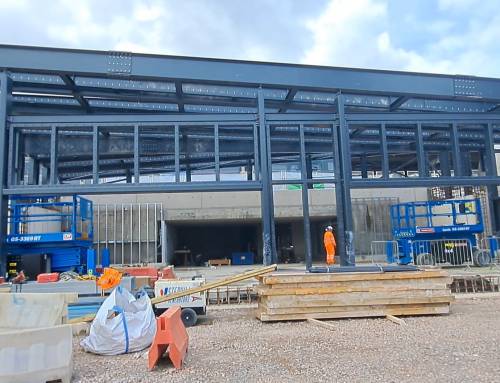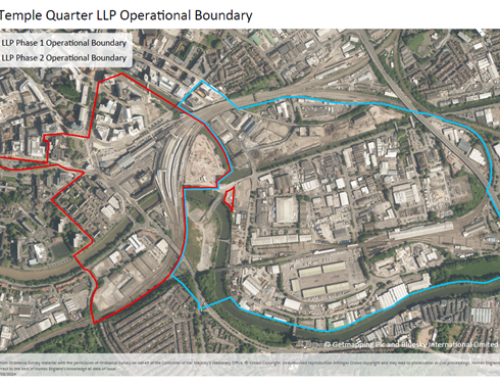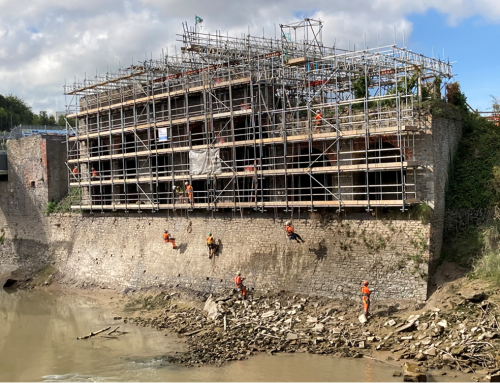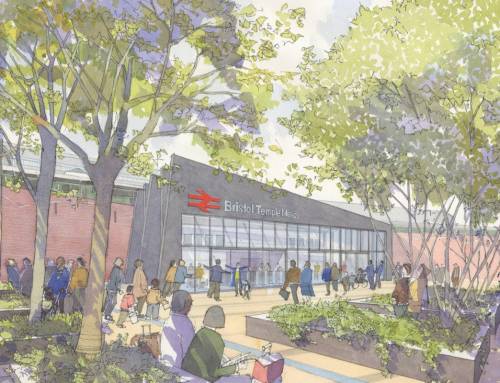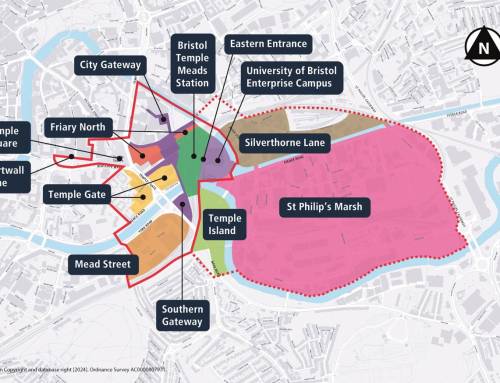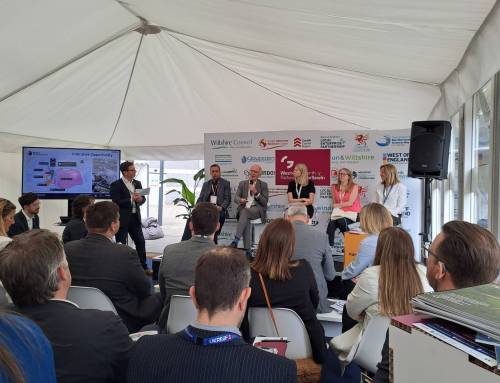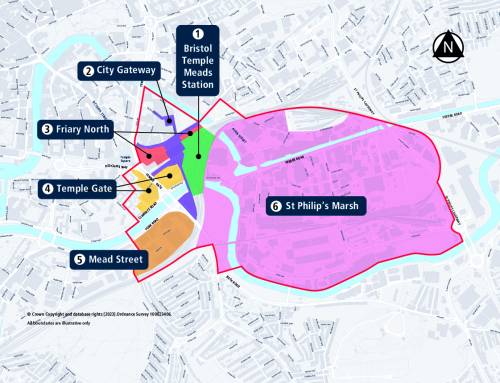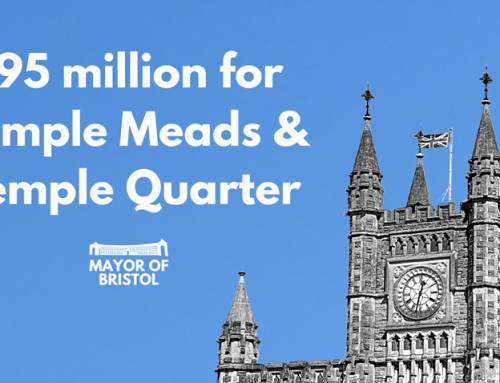
Temple Quarter is home to hundreds of innovative, successful and varied companies. Two of the Enterprise Zone’s key sectors – professional services and low carbon – come together in DNV GL, based at Linear Park in the north of the Enterprise Zone.
DNV GL provides classification, technical assurance, software and independent expert advisory services to the maritime, oil & gas, power and renewables industries. In 2009, the company (then just DNV) merged with GL and acquired the world’s largest wind energy consultancy, Bristol’s Garrad Hassan, as part of the merger. And wind energy continues to be a key focus for DNV GL’s Bristol office.
We spoke to three young experts working on wind energy and offshore renewables for DNV GL: Fernando Sevilla Montoya, Alice Maynard and Annika Wybrow. They told us about the kind of work that they do and, in doing so, illustrated the depth and breadth of the activity being undertaken in the Enterprise Zone.
What is your role at DNV GL, and how long have you been doing it?
Fernando: I’ve been working at DNV GL for about six years and I’m a Project Engineer in the Offshore Projects Team. As part of my job, I perform computer model simulations of how offshore wind farms operate, and I use these simulations to advise companies who are planning to construct these wind farms how best to operate them.
Alice: I’ve been working here for about five years, and I’m a Senior Geotechnical Engineer in the Offshore Structures section. All my work deals with offshore renewables and I primarily work on wind farms, dealing with the civil engineering aspects of their construction. This is predominantly looking at the foundations for offshore wind turbines and subsea cable routes. I do calculations to help decide things like what kind of foundations are needed, how they’re going to be installed, how cables are going to be put into the seabed.
Annika: I’ve been working here for over 8 years – a veteran! I’m an Operational Energy Lead in the Asset Integrity and Performance section. While some parts of the company do modelling to predict how much energy a wind farm is going to produce before it is built, my team takes data recorded at a wind farm after it has been constructed, and uses it to get a much more evolved prediction of what the wind farm will do in future. From this, you can see if it’s experiencing any problems, and think about how they might be solved in the future.

Annika Wybrow
What is a typical day’s work?
Fernando: Most of my work is desk-based, but occasionally I’ll get to go out and conduct a site inspection. This means visiting an offshore wind farm and climbing up the turbine to do a visual check that it’s been well serviced. When I’m at my desk, I’ll be doing computer simulations as well as numerical and statistical analyses.
Alice: I’m also desk-based most of the time – calculating things like the sizes of foundations and working out how big a hammer we need to knock things into the ground! I sometimes visit offshore wind farms when they’re under construction, to help with unexpected events; a lot of unexpected things can happen when you’re building things in the sea. My work is constantly changing though – part of why the job is so interesting.

Alice Maynard at her desk
Annika: My typical day’s work is made up of wrestling with very large data sets, lots of data processing and number crunching.
Why were you interested in working in the sector, or for DNV GL in particular?
Fernando: I studied Environmental Engineering and then did a masters in Renewable Energy – so this is what I’ve always wanted to focus on. I think renewable energy is the future, and I see my work as a way of contributing to our journey towards a more sustainable society. When I was looking for jobs in the field, the company (then Garrad Hassan) was really well known in the field – this was the first job I got and I continue to enjoy it here!
Alice: My reasons are quite similar to Fernando’s – I see renewable energy as something that needs to be developed in order for us to move forwards to a sustainable future. But also, in civil engineering for the marine environment, you get to play with lots of big toys – so it’s quite fun! I’ve gotten to do fun things like jumping out of a helicopter and onto a boat – not many other people can say that’s part of their day job!
The geotechnical side of the industry is also constantly changing: we’re always being pushed to lower the cost of energy, to optimise the way we design things, to come up with new ways to calculate and design to make things cost less. From a technical perspective, this really keeps things interesting.
Annika: I would second that. I like how things keep changing; with new technology constantly being developed, the job definitely doesn’t get boring. And, of course, I also love working in an industry that’s having a positive impact on the world.
Do any projects you’ve worked on particularly stick in your mind?
Alice: The last really big, exciting project that I worked on was for Rampion offshore wind farm. We worked on it throughout the construction phase, whereas often work with clients takes place during the design phase. We provided 24 hour on-call support to the guys installing the foundations: they could get in touch with us about any problems they encountered, night and day for nine months. Dealing with all those challenges, even late at night, was very rewarding – you feel as if you’ve really made a big impact on the project. And, at the end of the day, it was great to see the work actually getting done – seeing things get built rather than finishing during the design phase is pretty good!
Fernando: The project that’s stuck with me is the first one for which I got to actually go onsite and see the turbines, to see what all the work I do on the computer is working towards. Like Alice says, being able to see a project ‘in the flesh’ is really nice – and being offshore is pretty good too.

Fernando on a site visit
Annika: A couple of years ago, I worked on a portfolio project, meaning it was much larger than usual in terms of the number of wind farms and the value of contract. This meant there was a lot of pressure to get it done to a specific deadline – which just happened to coincide with the start of my maternity leave! It was a lot of hours and a lot of people working round the clock – but it was worth it.
What do you like about working in Bristol?
Fernando: I moved here from London for this job. I didn’t know anything about Bristol beforehand, but I love it – there’s always something to do, the countryside is really close by and it has great cycle routes. The fact it was the European Green Capital also makes me think that I’m living in the right place.
Alice: I started my career in Hong Kong as I finished university in 2009, which was not the best time for construction in the UK. But I always wanted to move back to the South West, so the fact that DNV GL has an office here is great. I live in Bath now, and the office’s proximity to Temple Meads railway station is really useful, and I love the area. For offshore geotechnical engineering, the Bristol/Bath area is one of the best places to be after London and Aberdeen.
Annika: I was born and grew up in Bristol but moved away for university and work – when a job opportunity came up back home, I jumped at the chance. Bristol is a great place to live and there’s always something happening.
Have our interviewees sparked your interest? Keep up to date with DNV GL on Twitter, Facebook and LinkedIn.[/fusion_builder_column][/fusion_builder_row][/fusion_builder_container]

